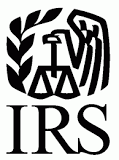The recent final HHS Notice of Benefit and Payment Parameters for 2020 (2020 NBPP Final Rule), addresses how direct support offered by drug manufacturers to enrollees for specific prescription brand drugs (drug manufacturers’ coupons) count toward the annual limitation on cost sharing.
Under that guidance, for plan years beginning on or after January 1, 2020, plans and issuers are explicitly permitted to exclude the value of drug manufacturers’ coupons from counting toward the annual limitation on cost sharing when a medically appropriate generic equivalent is available.
Background
Public Health Service (PHS) Act section 2707(b), as added by the Affordable Care Act, provides that all nongrandfathered group health plans, including non-grandfathered self-insured and insured small and large group market health plans, shall ensure that any annual cost sharing imposed under the plan does not exceed certain limitations (in 2020: $8,150 for self-only coverage and $16,300 for other than self-only coverage).
The 2020 NBPP Final Rule amended 45 CFR Section 156.130 by adding paragraph (h) to read as follows (emphasis added):
§ 156.130 Cost-sharing requirements.
* * * * *
(h) Use of drug manufacturer coupons. For plan years beginning on or after January 1, 2020:
(1) Notwithstanding any other provision of this section, and to the extent consistent with state law, amounts paid toward cost sharing using any form of direct support offered by drug manufacturers to enrollees to reduce or eliminate immediate out-of-pocket costs for specific prescription brand drugs that have an available and medically appropriate generic equivalent are not required to be counted toward the annual limitation on cost sharing (as defined in paragraph (a) of this section).
https://www.federalregister.gov/documents/2019/04/25/2019-08017/patient-protection-and-affordable-care-act-hhs-notice-of-benefit-and-payment-parameters-for-2020
Previously, the federal regulations were silent as to this issue. The problem arises due to a combination of (1) competition between drug manufacturers in the specialty drug categories, and (2) cost control steps recently taken by plan sponsor (and insurers). As CVS explains in describing its “True Accumulation” program:
As competition in specialty therapy classes grows, manufacturers have been increasingly using tools common in the traditional brand drug market — such as copay coupons — to build consumer loyalty, increase sales, and bypass payor cost-control strategies. Copay cards — those not based on financial need — help encourage the use of more expensive therapies by negating the impact of higher cost-sharing tiers on member out-of-pocket (OOP) cost. Payors seeking more aggressive control of their specialty spend can combine the tiered specialty approach with a True Accumulation feature, which ensures only true member cost share (non-third party dollars) is applied toward deductibles or OOP caps. The accumulator automatically adjusts member OOP costs when specialty copay cards are billed by a CVS Specialty pharmacy. The amount subsidized by the copay card does not count toward the member’s deductible or annual OOP maximum. True Accumulation may also be used independent of the specialty tier design and will cover all specialty drugs that offer a non-needs-based copay card.
https://payorsolutions.cvshealth.com/insights/a-foundational-approach-to-specialty-cost-management
The 2020 NBPP Final Rule was clearly designed to encourage programs suhc as CVS’s True Accumulation, but it could potentially be read to create a conflict with the rules for high deductible health plans (HDHPs) that are intended to allow eligible individuals to establish a health savings account (HSA). Specifically, Q&A-9 of IRS Notice 2004-50 states that the provision of drug discounts will not disqualify an individual from being an eligible individual if the individual is responsible for paying the costs of any drugs (taking into account the discount) until the deductible of the HDHP is satisfied.
Thus, Q&A-9 of Notice 2004-50, requires an HDHP to disregard drug discounts and other manufacturers’ and providers’ discounts in determining if the minimum deductible for an HDHP has been satisfied and only allows amounts actually paid by the individual to be taken into account for that purpose.
So the HDHP rules and the 2020 NBPP Final Rule could put the sponsor of an HDHP in the position of complying with either the requirement under the 2020 NBPP Final Rule for limits on cost sharing in the case of a drug manufacturer coupon for a brand name drug with no available or medically appropriate generic equivalent or the IRS rules for minimum deductibles for HDHPs, but potentially being unable to comply with both rules simultaneously.
Recognizing this tension, the Departments issued som FAQs on August 26, 2019 indicating that:
- Their initial interpretation (in the 2020 NBPP Final Rule) of how drug manufacturers’ coupons apply with respect to the annual limitation on cost sharing is ambiguous
- They intend undertake rulemaking to clarify this in the forthcoming HHS Notice of Benefit and Payment Parameters for 2021.
- Until the 2021 NBPP is issued and effective, the Departments will not initiate an enforcement action if an issuer of group or individual health insurance coverage or a group health plan excludes the value of drug manufacturers’ coupons from the annual limitation on cost sharing, including in circumstances in which there is no medically appropriate generic equivalent available.
See https://www.cms.gov/CCIIO/Resources/Fact-Sheets-and-FAQs/Downloads/FAQs-Part-40.pdf

